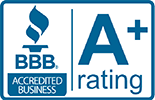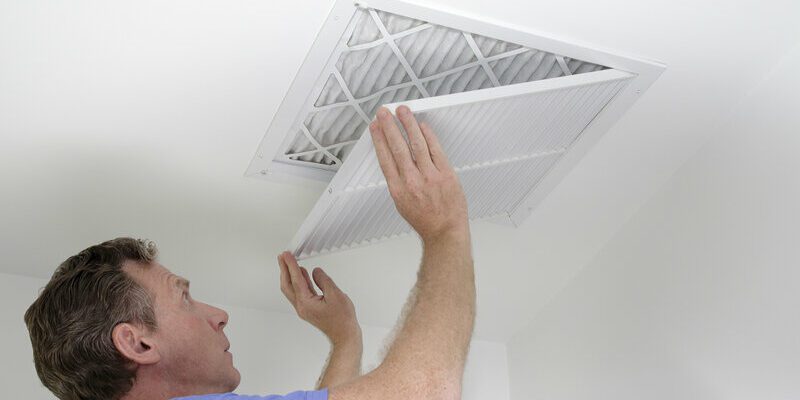- May 7, 2024
- in HVAC
- by Kyle Stewart
Mold and fungi remediation in air ducts is a critical service aimed at eliminating harmful growths that can compromise indoor air quality and pose health risks. In the humid environment of Florida, these microorganisms find an ideal habitat in the dark, moist confines of HVAC systems. Identifying the need for remediation involves recognizing signs such as visible mold, musty odors, and unexplained health symptoms among occupants. This process not only purifies the air but also enhances the efficiency of the HVAC system, reducing energy consumption. By understanding the indicators of mold and fungi presence, homeowners and facility managers can take timely action to safeguard their health and property. This guide delves into the essentials of spotting, addressing, and preventing mold and fungi in air ducts, ensuring a healthier living and working environment.
What Is Mold And Fungi Remediation In Air Ducts?
Mold and fungi remediation in air ducts is a specialized cleaning process aimed at removing and preventing the growth of mold and fungi within HVAC systems. This procedure involves a thorough inspection to identify mold presence, followed by physical removal using manual cleaning and HEPA vacuuming. To ensure complete eradication, antimicrobial treatments with EPA-approved fungicides are applied. The process concludes with implementing preventive measures, such as sealing leaks and improving ventilation, to inhibit future growth. Effective remediation not only eliminates health hazards associated with mold but also enhances the efficiency and longevity of HVAC systems, contributing to a healthier indoor environment.
Why Is Mold And Fungi Growth A Problem In Air Ducts?
Mold and fungi growth in air ducts presents a significant problem due to its direct impact on health and HVAC system efficiency. Health-wise, it can cause respiratory problems, and infections, and aggravate asthma and allergies, posing a risk to all occupants but especially to those with pre-existing conditions. From an efficiency standpoint, mold growth can lead to blocked airflow, which increases energy consumption and results in higher utility bills. Additionally, the presence of mold is often accompanied by a persistent musty or earthy smell, negatively affecting the indoor air quality and comfort of a living or working space. Addressing this issue is crucial for maintaining a healthy indoor environment and ensuring the optimal performance of HVAC systems.
| Impact Area | Specific Issues | Consequences |
| Health | Respiratory problems, infections, asthma, allergies | Increased medical visits, discomfort, and potential long-term health effects |
| HVAC Efficiency | Blocked airflow | Higher energy consumption, increased utility bills, potential for HVAC system damage |
| Indoor Air Quality | Persistent musty or earthy smell | Decreased comfort, potential negative effects on mental health |
| Overall Well-being | Aggravation of pre-existing conditions | Increased health risks for sensitive individuals |
Health issues
Exposure to mold and fungi in air ducts can lead to various health issues, including respiratory problems and infections. These microorganisms are known to aggravate asthma and allergies, significantly impacting the well-being of sensitive individuals. Studies have shown that individuals exposed to indoor mold may experience a wide range of respiratory symptoms, from coughing and wheezing to severe asthma attacks.
Respiratory problems and infections
The presence of mold spores can trigger respiratory issues, ranging from coughing and wheezing to more serious infections, especially in those with compromised immune systems. The CDC reports that certain molds can be pathogenic, leading to infections in individuals with weakened immune systems.
Aggravation of asthma and allergies
Mold and fungi act as allergens that can severely aggravate asthma and allergy symptoms. This can lead to increased discomfort and potentially dangerous health situations for affected individuals. The Asthma and Allergy Foundation of America notes that mold spores are a common trigger for asthma attacks.
Efficiency reduction
Mold growth in air ducts can cause a reduction in HVAC system efficiency. This inefficiency is primarily due to blocked airflow, which forces the system to work harder, thereby increasing energy consumption and elevating utility costs. The U.S. Department of Energy highlights that HVAC systems compromised by mold may operate up to 40% less efficiently.
Blocked airflow increases energy consumption
The blocked airflow caused by mold accumulation not only reduces system efficiency but also increases energy consumption. This leads to higher operational costs and potential system strain. Energy Star reports that proper HVAC maintenance, including mold remediation, can reduce energy bills by up to 30%.
Odor problems
One of the most noticeable signs of mold and fungi presence is a persistent musty or earthy smell. This odor can permeate throughout the indoor environment, making it uncomfortable for occupants and signaling the need for immediate remediation. The Institute of Inspection, Cleaning, and Restoration Certification (IICRC) suggests that persistent odors are a key indicator of mold issues that require immediate attention.
By addressing these issues promptly through professional remediation, the risks to health, HVAC efficiency, and overall indoor air quality can be significantly reduced, ensuring a safer and more comfortable environment for all occupants.
How Can You Tell If Your Air Ducts Need Mold And Fungi Remediation?
Identifying the need for mold and fungi remediation in air ducts can be determined through several key indicators. Visible mold growth inside or on the exterior of ducts, characterized by black, green, or white spots near vents, is a clear sign. A musty odor emanating when the HVAC system operates, especially if the smell intensifies with the use of air conditioning or heating, points towards mold presence. Additionally, unexplained health issues among household members, such as a sudden onset of respiratory symptoms or an increase in allergy or asthma symptoms that worsen despite medication, are strong indicators. Recognizing these signs early can prompt timely remediation actions, safeguarding both the health and the efficiency of the HVAC system. However, these signs are often overlooked, leading to prolonged exposure and potentially serious health risks.
Visible mold growth inside or outside the ducts
The presence of mold within or on the exterior of air ducts is a definitive sign that remediation is needed. This growth can often be spotted as discolorations or fuzzy textures on the surfaces, signaling a serious issue. Overlooked Indicator: Homeowners may mistake small amounts of visible mold for regular dust or dirt, delaying necessary remediation.
Black, green, or white spots near vents
Black, green, or white spots appearing near vent areas are clear indicators of mold colonization. These spots are the physical manifestations of mold and fungi thriving in the ductwork, requiring prompt action. Consequences of Delay: Ignoring these spots can lead to widespread mold growth throughout the duct system, exacerbating health risks and remediation costs.
Musty odors when the HVAC system is running
A musty or earthy smell emanating from the air ducts when the HVAC system operates is a telltale sign of mold presence. This odor, particularly noticeable during the system’s startup, should not be ignored. Tip for Distinguishing Odors: Mold-related odors are persistent and may worsen with humidity or the use of HVAC; in contrast, transient smells may not indicate mold.
Smell intensifies with AC or heating use
If the musty smell intensifies with the use of air conditioning or heating, it suggests a significant mold issue within the ducts, necessitating immediate attention to prevent further complications. Overlooked Indicator: Homeowners may attribute the intensifying smell to external factors, such as seasonal changes, rather than mold growth.
Unexplained health issues among household members
Unexplained health issues, such as headaches, dizziness, or nausea, among those living in the space, can be directly linked to mold exposure from contaminated air ducts, highlighting the need for a thorough inspection. Consequences of Delay: Prolonged exposure to mold can lead to chronic health issues, especially in individuals with pre-existing respiratory conditions.
Sudden onset of respiratory symptoms
Sudden onset of respiratory symptoms, including coughing, wheezing, or difficulty breathing, especially in individuals without a history of such issues, can be a strong indicator of mold exposure, urging immediate remediation efforts. Tip for Distinguishing Symptoms: If respiratory symptoms persist or worsen in specific indoor environments but improve elsewhere, mold exposure within the HVAC system may be the cause.
Increased allergy or asthma symptoms
For individuals with pre-existing conditions, an increase in allergy or asthma symptoms that seem unrelated to external factors might be caused by mold spores circulating from the air ducts, signifying the urgency of addressing the problem. Overlooked Indicator: Symptoms often attributed to seasonal allergies may actually be a response to indoor mold exposure.
Worsening conditions despite medication
When medical interventions do not seem to alleviate the condition or symptoms worsen despite medication, it could be due to continuous exposure to mold and fungi from the air ducts, emphasizing the critical need for mold remediation. Consequences of Delay: Ignoring these worsening conditions can lead to long-term health complications and a decrease in the quality of life.
What Causes Mold And Fungi To Grow In Air Ducts?
Mold and fungi thrive in air ducts primarily due to high humidity levels and condensation. Indoor humidity levels above 60% create an ideal environment for these organisms. Condensation within ducts, often a result of temperature differences between the air and the duct surfaces, further exacerbates this issue. Additionally, dust and organic material accumulation within the ducts provides the necessary nutrients for mold growth. Understanding these causative factors is crucial for implementing effective preventive measures, ensuring healthier indoor air quality, and extending the life of HVAC systems.
| Cause | Explanation | Common Mistakes Contributing to the Problem |
| High Humidity Levels | Indoor environments with humidity levels above 60% provide the moisture mold needs to grow. | Failing to use dehumidifiers in humid climates or during wet seasons. |
| Condensation within Ducts | Occurs when warm, moist air meets cooler duct surfaces, creating water droplets. | Inadequate insulation of air ducts, especially in unconditioned spaces like attics or basements. |
| Temperature Differences | Differences between the air in the ducts and surrounding surfaces lead to condensation. | Lack of proper HVAC system maintenance, leading to inefficient cooling and heating cycles. |
| Dust and Organic Material Accumulation | Dust, skin flakes, and other organic materials provide nutrients for mold. | Not regularly changing HVAC air filters or using low-quality filters that fail to trap fine particles. |
High humidity levels
High humidity levels in indoor environments are a primary factor promoting mold and fungi growth in air ducts. When the humidity indoors exceeds 60%, it creates conditions conducive to their development. A common mistake is not monitoring indoor humidity levels or neglecting to use dehumidifiers in areas prone to high humidity.
Above 60% humidity indoors
Indoor humidity levels above 60% significantly increase the risk of mold and fungi proliferation within air duct systems, necessitating measures to reduce moisture. Homeowners often overlook the importance of maintaining optimal humidity levels, leading to an environment that supports mold growth.
Condensation within ducts
Condensation within ducts occurs due to temperature differences between the air in the ducts and surrounding surfaces. This moisture provides an ideal breeding ground for mold and fungi. Failing to insulate ducts properly, especially in colder areas of the home, can exacerbate this issue.
Due to temperature differences
The temperature differences between the duct air and the external environment lead to condensation, further exacerbating the conditions for mold growth. Inefficient HVAC operation or lack of regular maintenance can result in significant temperature discrepancies, promoting condensation.
Dust and organic material accumulation
The accumulation of dust and organic material in air ducts serves as a food source for mold and fungi. These materials, when combined with moisture, enable mold to thrive and proliferate. A common mistake is neglecting regular duct cleaning and not replacing HVAC filters as recommended, allowing dust and organic debris to accumulate.
Provides nutrients for mold growth
Dust and organic debris within the ductwork provide nutrients for mold growth, making regular cleaning and maintenance essential for preventing mold issues. Homeowners often underestimate the importance of HVAC maintenance, including duct cleaning and filter replacement, which can lead to nutrient accumulation for mold.
By addressing these causative factors through proper home maintenance and HVAC care, homeowners can significantly reduce the risk of mold and fungi growth in their air ducts, promoting a healthier and more comfortable indoor environment.
How Are Mold And Fungi Remediation Performed In Air Ducts?
Mold and fungi remediation in air ducts is executed through a comprehensive approach that begins with inspection and testing to confirm the presence and extent of mold growth. Professionals utilize cameras and mold testing kits for accurate detection. Following confirmation, physical removal of mold is conducted through manual cleaning and HEPA vacuuming to eliminate spores and contaminated materials. To ensure the eradication of mold and prevent its recurrence, antimicrobial treatment with EPA-approved fungicides is applied. The remediation process concludes with implementing preventive measures, such as sealing leaks and improving ventilation, to maintain a mold-free environment. This methodical approach ensures the thorough removal of mold and safeguards the air quality and integrity of HVAC systems.
| Step | Technique | Specifics | Purpose |
| Inspection and Testing | Cameras and mold testing kits | Use of infrared cameras to detect moisture and mold testing kits to identify mold types. | To accurately assess the extent of mold growth and moisture presence within the ductwork. |
| Physical Removal of Mold | Manual cleaning and HEPA vacuuming | Manual scrubbing with brushes and HEPA vacuuming to remove mold spores and contaminated materials. | To physically eliminate visible mold growth and spores from the duct surfaces and interior. |
| Antimicrobial Treatment | Application of EPA-approved fungicides | Use of fungicides such as Concrobium Mold Control or Foster 40-80, both EPA-registered for HVAC systems. | To kill any remaining mold spores and prevent future growth by creating an antimicrobial barrier. |
| Preventive Measures | Sealing leaks and improving ventilation | Sealing ductwork leaks with mastic sealant and ensuring proper HVAC system ventilation. | To control moisture levels and prevent conditions conducive to mold growth. |
Inspection and testing
Inspection and testing are the initial steps in mold and fungi remediation, crucial for identifying the extent of the problem within air ducts. This phase ensures targeted and effective treatment. Professionals may use thermal imaging to detect hidden moisture and air sampling to determine the mold spore count in the air.
Use of cameras and mold testing kits
Professionals employ cameras and mold testing kits to accurately detect mold presence, allowing for a thorough assessment of the affected areas. This includes visual inspections and swab samples to identify the mold species.
Physical removal of mold
The physical removal of mold involves eliminating visible growths and contaminated materials from the air ducts, a key step in remediation. This is often achieved through detailed cleaning with antimicrobial solutions and scrubbing tools designed for ductwork.
Manual cleaning and HEPA vacuuming
Manual cleaning and HEPA vacuuming are employed to meticulously remove mold spores, ensuring a comprehensive cleanup of the HVAC system. HEPA vacuuming is particularly effective in capturing fine particles without recirculating them into the indoor air.
Antimicrobial treatment
Following removal, antimicrobial treatment with EPA-approved fungicides is applied to kill any remaining mold spores and inhibit future growth. It’s important to select fungicides specifically approved for use in HVAC systems to ensure safety and effectiveness.
Application of EPA-approved fungicides
The application of EPA-approved fungicides ensures the effective eradication of mold and protects against its recurrence, adhering to safety and environmental standards. Technicians may use foggers or sprayers to evenly distribute the fungicide throughout the ductwork.
Preventive measures to avoid future growth
Implementing preventive measures is essential to maintain a mold-free environment. This includes actions such as sealing leaks and improving ventilation to control moisture levels and prevent mold formation. Regular maintenance and inspections are key to early detection and prevention.
Sealing leaks and improving ventilation
Sealing leaks and improving ventilation are critical steps in preventing mold growth by reducing moisture accumulation and ensuring proper airflow within the HVAC system. Properly sealed and insulated ducts, along with efficient ventilation, can significantly reduce the risk of mold recurrence.
What Are The Preventive Measures To Avoid Mold And Fungi Growth In Air Ducts?
Preventing mold and fungi growth in air ducts involves a combination of regular cleaning and maintenance of the HVAC system and annual inspections by professionals. Utilizing dehumidifiers in high-humidity areas and keeping indoor humidity below 60% are effective strategies. Ensuring proper insulation to prevent condensation and insulating air ducts in unconditioned spaces helps mitigate the conditions that favor mold growth. Additionally, regularly replacing air filters and using high-efficiency particulate air (HEPA) filters can significantly reduce the risk of mold and fungi proliferation by maintaining clean airflow and removing potential mold spores from the air. These measures collectively contribute to a healthier indoor environment by minimizing the conditions conducive to mold and fungi growth:
Regular Cleaning And Maintenance of the HVAC system are paramount to preventing mold and fungi growth, ensuring both efficient operation and high air quality.
Annual Inspections by HVAC professionals are crucial for early identification of potential issues, including conditions conducive to mold growth or existing mold presence.
Dehumidifiers in areas with high humidity help maintain indoor humidity levels below 60%, creating an unfavorable environment for mold and fungi.
Maintaining Indoor Humidity below 60% is essential in deterring mold and fungi proliferation, as higher humidity levels provide a conducive environment for their growth.
Proper Insulation plays a vital role in preventing condensation within ducts, addressing a common source of moisture that can lead to mold development.
Insulating Air Ducts in unconditioned spaces aids in maintaining consistent temperatures, thus reducing the risk of condensation and subsequent mold growth.
Regularly Replacing Air Filters in the HVAC system ensures clean air circulation, minimizing the amount of dust and organic materials that can support mold growth.
Using High-Efficiency Particulate Air (HEPA) Filters captures mold spores and other particulates, significantly lowering the risk of mold and fungi proliferation within the HVAC system.






